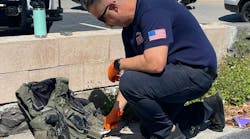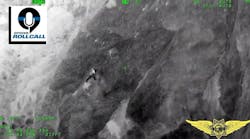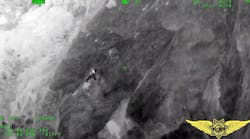While active shooter events have occurred in a wide variety of locations, one thing they all have in common is density of population. That’s not to say that they only occur in urban areas, but the actual “target” zone is full of people. Such conditions make it easier for a killer to increase his efficiency of killing; he (or she) gets more deaths per shots fired. If they plan and take the time to trap those people in the target zone, they can further increase the time they have to complete their attack. The addition of improvised explosives, or explosives at a secondary location, also increases their “kill count.” For all that, we don’t often think about the potential for an active shooter attack on our military installations, whether they’re located in foreign lands or here in America. We tend to think of them as secure simply by virtue of the controlled access many, if not most, of them incorporate and the fact that they are mostly populated by our own military personnel and their families or dependents. So what happens when one of them commits the attack?
Thankfully, on November 5, 2009, Nidal Hasan didn’t plan s far ahead as to chain any doors, plant any explosives, etc. On November 5, 2009, Nidal Hasan carried out a mass shooting on the Fort Hood military base. Hasan killed thirteen people and injured 32 others. Hasan perpetrated the shooting with an FN 5.7 handgun and a .357 revolver and carried out the shooting over a ten-minute span from 1:34pm to 1:44pm (CST).
Hasan, a commissioned officer of medium rank, allegedly began preparing for the shooting on July 31, 2009 when he entered a gun store in search of "the most technologically advanced weapon on the market and the one with the highest standard magazine capacity." The store employees recommended the FN 5.7 to Hasan and he returned the next day to purchase the weapon. When asked what his intended use was for the weapon he only replied with different iterations of the previous quote. Hasan continued to visit the store once a week to purchase extra magazines and purchased 3,000 rounds of ammo total for the FN. Hasan also began to regularly attend a shooting range and reportedly became very proficient at hitting targets out to 100 yards with the handgun.
It should be noted, and was rarely discussed in the mainstream media, that Hasan’s preparations made clear his intention to have a high “kill count.” He specifically sought out a contemporary weapon of recent design and manufacture as well as one with a high magazine capacity. The repeated visits for extra magazines and the purchase of 3,000 rounds of ammunition also speak to his desire to kill as many people as possible. He may not have been aware, although some basic understanding of ballistics is assumed due to his standing as a commissioned officer in our nation’s military, but the FN FiveseveN (5.7mm) round combines a lightweight projectile with a higher velocity upon firing. That results in a flatter trajectory and a longer potential engagement distance. Out of a rifle length barrel (16” or more) and from a stable firing position, a skilled shooter could engage targets out to 300 yards or more. From a handgun, as was mentioned, target engagement at 100 yards was possible, and even reasonably easy if the shooter has mastered marksmanship skills.
Hasan entered the Soldiers Readiness Center on Fort Hood at approximately 1:34pm and asked to the see the officer that had been helping him with his deployment preparations. After the front desk worker left to get the officer Hasan reportedly went behind the desk, bowed his head for several seconds, then shouted “Allahu Akbar” and began firing at soldiers located in the room in a fanlike motion. Several soldiers and a civilian in the Center attempted to stop Hasan but were either injured in vital areas or were killed. Hasan began to go through the building targeting uniformed soldiers and leaving many civilians unharmed.
Very little was said about Hasan’s obvious connection to the Islamic faith. Our military today does not consider religious faith as part of recruiting or retaining personnel – and they shouldn’t. That said, given our country’s engagement in a war against terrorist who have radicalized the Muslim faith as justification for their acts of violence against us, it may be justified to at least repeat some portions of background investigations where indicators exist that create doubt about a service member’s loyalty.
Hasan exited the building and encountered a base civilian police officer, whom he exchanged fire with before wounding the officer twice in her leg. Hasan continued to fire at fleeing soldiers as nurses and medics began to enter the Readiness Center. Hasan went behind the center out of site from most of the personnel responding. Civilian Police Sergeant Mark Todd then encountered Hasan and gave him orders to surrender. According to Sgt. Todd, Hasan didn’t say anything but merely began firing at him. Sgt. Todd returned fire and during the exchange, Hasan then ran out of ammo in his pistol. It’s reported that Sgt. Todd fired a total of five rounds at Hasan, hitting him and disabling him. Sergeant Todd then ran over and kicked the pistol out of Hasan’s hand and handcuffed him.
Due to his standing as a military officer, Hasan was treated in accordance with the Universal Code of Military Justice (UCMJ) and processed through the military criminal system. The public outcry for Hasan to be treated as a terrorist… a military combatant… or anything other than a commissioned officer in our military, fell on deaf ears. While that is understood, the combination of an active shooter event ON a “secure” military installation committed by a man with obvious ties – even if it’s only his personal faith – to Islam (radical followers of which we are still combatting today) creates some bafflement as to why he wasn’t being treated more harshly.
The event DID cause the Department of Defense to review security measures, standards and Standard Operating Procedures on our domestic military installations. There was an additional outcry in the pro-gun community to allow our commissioned and enlisted personnel to be armed on military installations. As of this writing, no changes in that regard have occurred.



